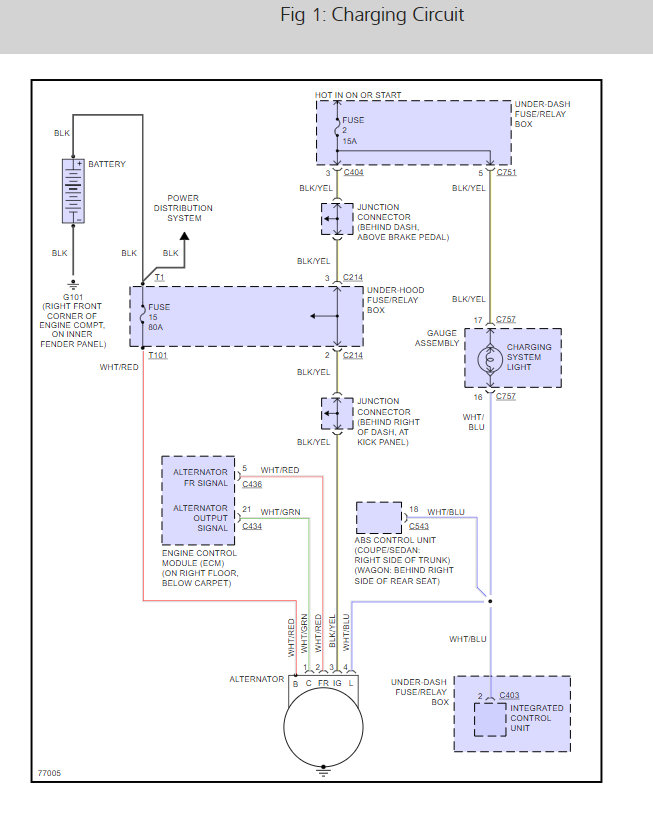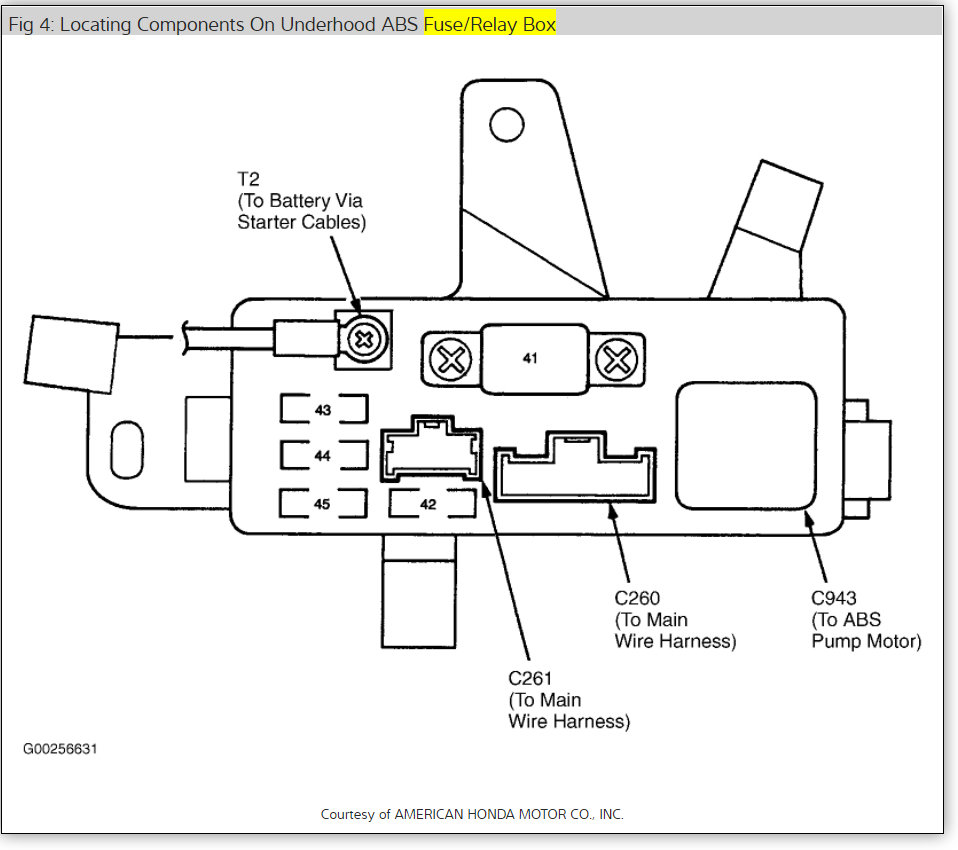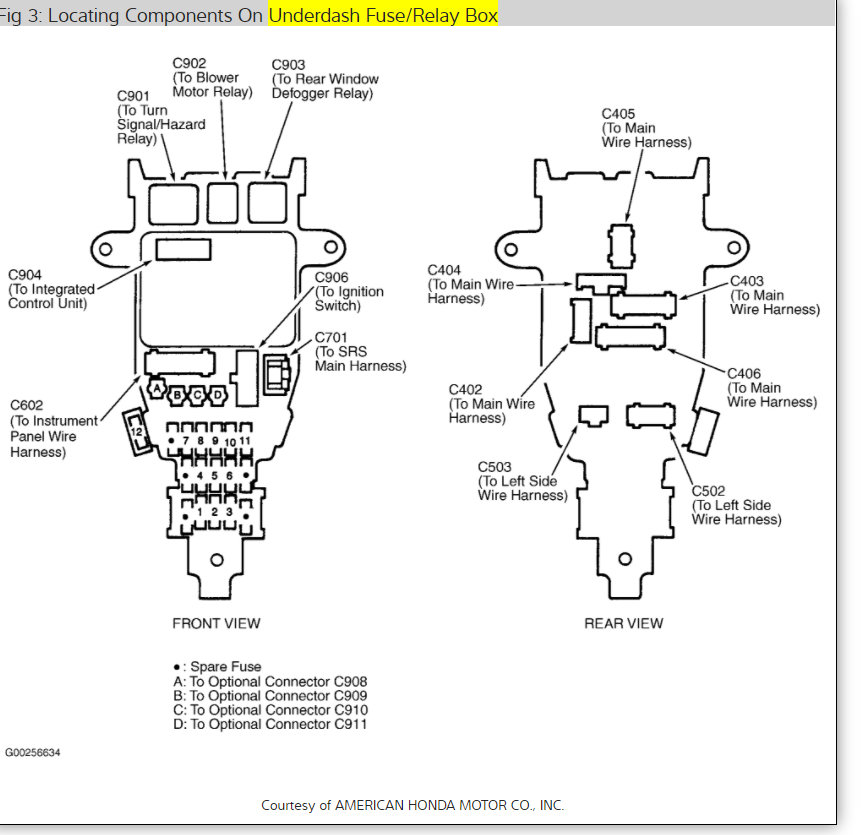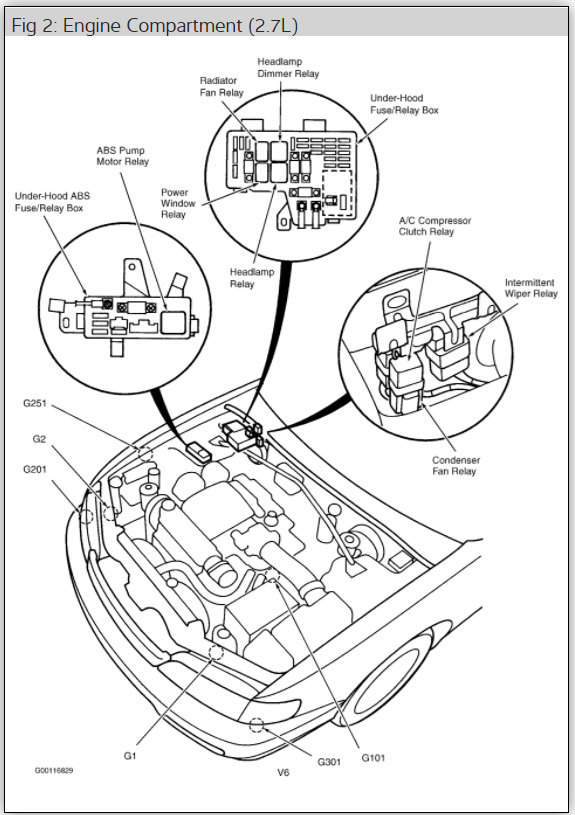Hello,
There is a fuse #2 in the under dash fuse panel here is a guide and the wiring diagrams below with the fuse location as well.
https://www.2carpros.com/articles/how-to-check-a-car-fuse
There are a few more possibilities:
1. Alternator is faulty. Maybe there was an error with the bench test.
2. Alternator is good but not charging due to missing power supply. Test to battery voltage at the main mast. It should be hot at all times. Check the 4 pin connector for secure connection. Perform alternator output test.
ALTERNATOR OUTPUT TEST
1.With engine at normal operating temperature, remove alternator harness connector. See Fig. 1 . Turn ignition switch to ON position.
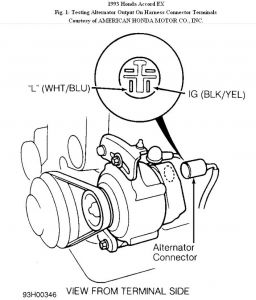
2.Check for battery voltage between Black/Yellow wire terminal of harness connector and ground. Ensure battery voltage is also present between White/Green wire terminal and ground. If battery voltage is present, go to step 4).
3.If battery voltage is not present, check dash fuse No. 2 (15A). Check for open circuit in Black/Yellow wire between dash fuse box and alternator. Check for open circuit in White/Green wire between PGM-FI ECM and alternator.
4.Turn ignition off. Reconnect alternator harness connector. Connect alternator tester with integral carbon pile (Sun VAT-40 ) to system. Set tester switch to position No. 1. Ensure all accessories are off. Start engine.
5.Operate engine at 2000 RPM and check output voltage. If voltage is greater than 15.1 volts, replace voltage regulator. Let engine idle. Set tester switch to position No. 2. Remove tester inductive pick-up, and zero ammeter. Reconnect inductive pick-up.
6.Operate engine at 2000 RPM and check voltage. If voltage is less than 13.9 volts, test battery. Using carbon pile function of tester, apply load until voltage drops to 12.0-13.5 volts. Amperage should be 30 amps or greater. With engine still at 2000 RPM, full-field charging system. Amperage should be 40 amps or greater.
7.If amperage is not within specification, replace alternator. If voltage is not within specification, replace defective internal voltage regulator.
Check out the diagrams (Below). Please let us know what happens.
Images (Click to make bigger)
SPONSORED LINKS
Saturday, July 17th, 2010 AT 1:31 PM

